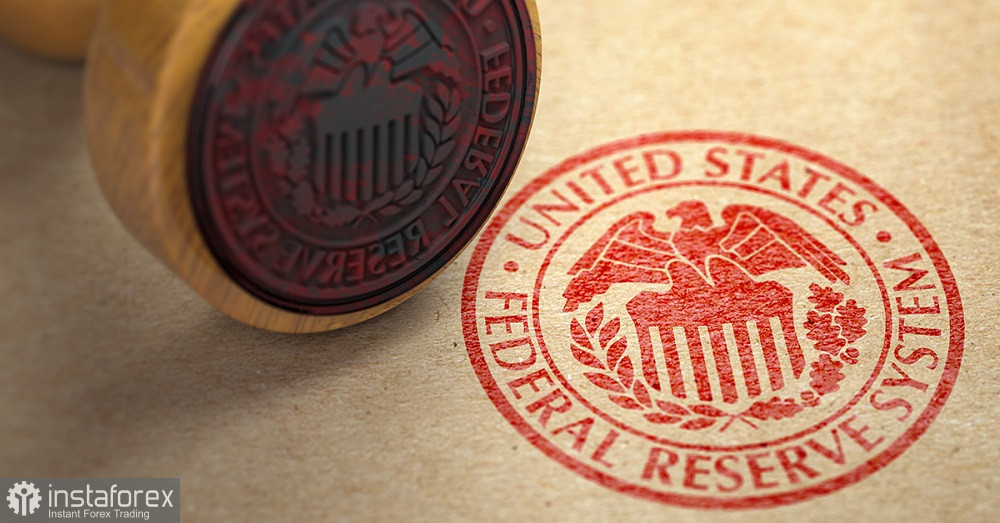The euro-dollar pair reacted weakly to the minutes of the Federal Reserve's December meeting. The released document indeed did not bring any sensations but reflected the general sentiment dominating the Open Market Committee. These sentiments are quite dovish, which halted the decline of the EUR/USD pair and began its upward rally after the publication of the minutes.

The minutes reminded traders of the impending decoupling of positions between the Fed and the ECB, and this reminder exerted certain pressure on the greenback. Of course, much will depend on the dynamics of inflation in the eurozone (the December figure of which we will learn tomorrow, January 5th) – if the consumer price index slows down more than expected, the ECB's "moderately hawkish" stance of keeping rates at least until June-July could soften.
However, if we assess the situation right now, the overall fundamental background does not favor strengthening the American currency, and consequently, does not favor the development of a sustainable downward movement of EUR/USD. The downward impulse of the last two days was due to the strengthening of anti-risk sentiments. Markets reacted to the weak PMI index for China's manufacturing sector, which firstly remained in the contraction zone (49.0) and, secondly, was in the red zone (predicted to grow to 49.8 points). Moreover, recent events in the Middle East, amidst a possible war between Israel and Hezbollah, played a role in strengthening anti-risk sentiments.
But let's return to the minutes published yesterday, which, so to speak, brought dollar bulls back to earth. Remember, the December Fed meeting was the softest in the last two years. The regulator made it clear that an interest rate hike is no longer the Central Bank's baseline scenario. Simultaneously, the Central Bank noted a growth in dovish sentiments among Fed members. At the final press conference, Jerome Powell acknowledged that the issue of easing monetary policy will become "a central topic for discussion" in the near future.
In addition, traders were surprised by the updated dot plot. According to preliminary forecasts, the regulator was supposed to envisage a 50-basis point rate cut for 2024. But the chart reflected a likelihood of a decrease by 75 basis points. According to the Fed chair, the Committee members are now focused on not making the mistake of keeping rates too high for too long, considering expectations of slowing economic growth and the presence of real progress in the fight against inflation.
The protocol of this meeting could not a priori outdo the actual outcomes of the December meeting in terms of dovish messages. This explains the relatively weak market reaction to the release. Yet, certain moments here deserve attention.
Thus, according to the text of the document, almost all Committee participants think that a lower federal funds rate would be acceptable by the end of the year (2024). In addition, Fed members expressed concerns about how long the economy can withstand the current level of interest rates. At the same time, the regulator emphasized that inflationary risks are decreasing.
On one hand, the minutes did not answer the main question of when, exactly, will the Central Bank begin to ease monetary policy. On the other hand, the document reflected the dominant opinion that inflation is under control, as well as increasing concern about economic risks in case the rate is maintained at the current level for too long.
It is necessary to note that the Fed's December meeting took place before the publication of the core PCE index, which came out in the red zone, reflecting inflation slowing down. In November, the core personal consumption expenditures index fell to 3.2% year-on-year (with a forecasted decline to 3.3%), reaching a multi-month low (the weakest pace of growth since April 2021). Therefore, today's release should also be considered in light of this circumstance.
Yet, if we talk about the bottom line—what did the Fed's minutes tell us? The minutes of the December meeting once again reminded market participants of the Fed's dovish sentiment. But nothing, so to speak, beyond that. It should be emphasized that the key role in determining the timing of the rate cut will be played by inflation reports, which will be published this month and in February. If the main indicators continue their downward course, the likelihood of easing monetary policy at the Fed's March meeting will increase to 80-90%. The published minutes in this regard did not tell us anything new—the document, in essence, just repeated the already voiced theses.
Given this fact, it can be assumed that the impact of the "minutes" on the dynamics of EUR/USD will be limited. Very soon, the focus will shift to the report on inflation growth in the eurozone and, of course, the Nonfarm Payrolls. Therefore, it is not advisable to trust the current rise of the pair – likely, the price will hover around the 1.0950 mark, staying within the range of the 9th figure. In anticipation of the publication of key reports of the week, EUR/USD traders are unlikely to venture into opening large positions – either upward or downward.





















